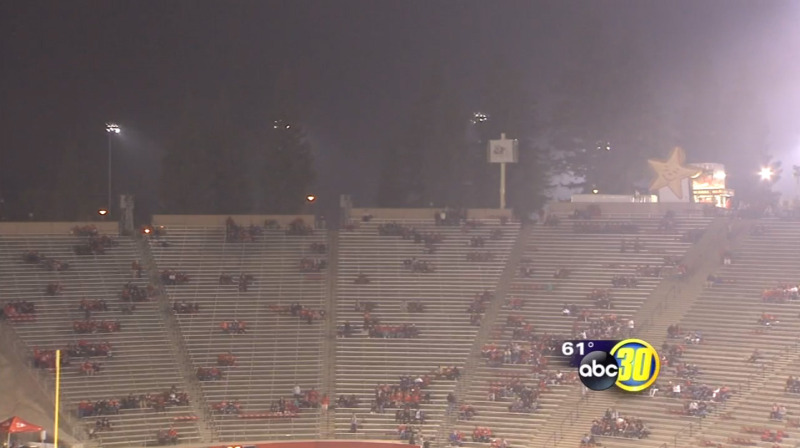Hourly readings of PM 2.5 on the San Joaquin Valley Air Pollution Control District’s real-time monitoring website have been hovering in the red (unhealthy) and purple (extremely unhealthy) zones since last week, sometimes reaching levels three times higher than the average daily federal health standard.
The San Joaquin Valley Air Pollution Control District says unusually warm temperatures for November -- and the ongoing drought -- are to blame.
“Low overnight temperatures, high afternoon temperatures, so the inversion layer is getting fairly close to the ground overnight. It’s mushing all that pollution down,” says the air district’s Jaime Holt.
“Extreme stagnation, long dry spells, with very little air movement,” adds Samir Sheikh, deputy air pollution control officer. “Just the perfect conditions for PM 2.5 to form in the atmosphere.”
Air district officials have been asking residents not to burn their fireplaces and commuters to shorten trips and not idle their cars at drive-thrus. But air quality activists says the air district needs to publicly ask schools to cancel athletic events, too.
“Schools usually keep their kids in from recess, from PE because of the air quality, but after school, they’re not really following their recommendations anymore,” says Dolores Weller, of the Central Valley Air Quality Coalition. “The air district does need to give some stronger recommendations based on protecting kids' health.”
That's a critique that air quality activists have been making for a long time: the health message about air quality isn’t getting out there to the public.
At last weekend’s Fresno State football game against San Jose State, the haze was so thick it was hard to see across the stadium. But fans showed up anyway. You can check out a video of the smoggy stadium here.
Participation in the real-time air monitoring program is voluntary for schools. The San Joaquin Valley air district says it does warn schools when air pollution spikes, but it doesn’t have the authority to stop school events.
“We do want to keep this relationship open with the schools. What we don’t want them to feel is that we are coming down with a hammer on them in such a way that it makes them not want to participate in the [air-monitoring] program at all,” says the Air District’s Jaime Holt.

